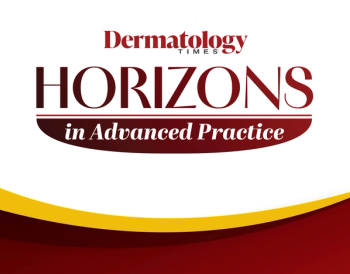
Overview of PP
Tj Chao, MPAS, and Lauren Miller, MPAS, discuss the symptoms of plaque psoriasis (PP) and why it may be difficult to diagnose.
Episodes in this series

Transcript
Lauren Miller, MPAS, PA-C: Hello, and welcome to this Dermatology Times® DermView™ titled, “Perspectives in the Management of Plaque Psoriasis.” My name is Lauren Miller, and I am the president of the Society of Dermatology Physician Assistants’ board of directors, and I’ve been practicing dermatology for 15 years out of Alabama. Joining me today is TJ Chao, who is a colleague of mine, and he has over 22 years of dermatology experience, practicing out of [Atlanta North Dermatology & Skin Care].
Our discussion today is going to focus on the role of nonsteroidal topical [medications] in the treatment of plaque psoriasis. We’re going to highlight the safety and efficacy of these treatments and their role in the care of patients with this disease. TJ, most of us know the signs and symptoms of plaque psoriasis, but let’s do an overview of plaque psoriasis, how it manifests, and when patients present to the office what it may look like. What do you see in clinical practice?
TJ Chao, MPAS, PA-C: There can be a variety of different presentations. Typically though, there are erythematous, scaly micaceous plaques. Generally, they occur on the elbows and the knees most commonly. Some other common areas are the scalp and the groin, but it can affect a lot of different locations on the body, including the nails. So, there’s not always 1 perfect presentation to the disease. There can be a lot of variability. Sometimes it can be hard to diagnose the condition, especially in sites like the groin, where it looks completely different than what you might see on the scalp.
Lauren Miller, MPAS, PA-C: Do you find that maybe in patients with skin of color it looks different as well?
TJ Chao, MPAS, PA-C: Absolutely, yes. All the Fitzpatrick [scale] scores can have varying color presentation to the plaques, or the lesions, and it can be very confusing for some providers to decipher what they’re looking at.
Lauren Miller, MPAS, PA-C: What about when it comes to symptoms? What are some of the symptoms patients complain about to you?
TJ Chao, MPAS, PA-C: Most frequently I think the visual aspect of the disease is what really bothers patients. They don’t like the way they look, the scaling that occurs [and gets] onto their clothing, and other things they might have. Then you have the itching and burning that some patients really complain about. That isn’t something we see in all patients, but there are some patients who have a lot of itching with the disease.
Lauren Miller, MPAS, PA-C: I find I’ve got patients who if they have their scalp affected, itch is probably the No. 1 complaint they have, outside of having the scale and the flaking on their clothes. Itch is a big deal to some patients when it comes to the location.
Transcript edited for clarity.
Newsletter
Like what you’re reading? Subscribe to Dermatology Times for weekly updates on therapies, innovations, and real-world practice tips.




































